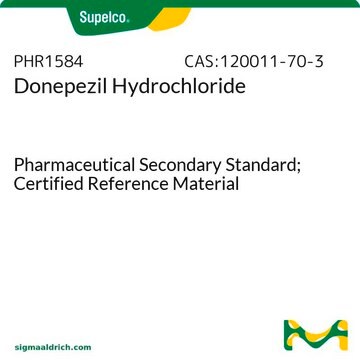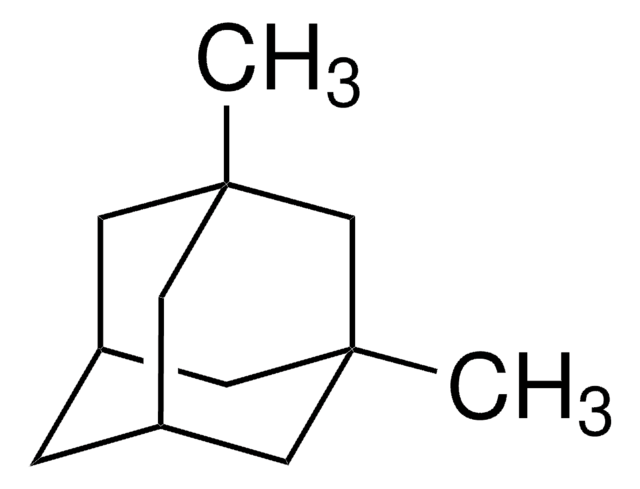M9292
Memantine hydrochloride
≥98% (GC), powder, NMDA glutamate receptor antagonist
Synonyme(s) :
3,5-Dimethyl-1-adamantanamine hydrochloride, 3,5-Dimethylamantadine hydrochloride, 3,5-Dimethyltricyclo[3.3.1.13,7]decan-1-amine hydrochloride
About This Item
Produits recommandés
product name
Memantine hydrochloride, ≥98% (GC)
Pureté
≥98% (GC)
Forme
powder
Auteur
Forest Labs
Chaîne SMILES
Cl.C[C@]12CC3C[C@](C)(C1)CC(N)(C3)C2
InChI
1S/C12H21N.ClH/c1-10-3-9-4-11(2,6-10)8-12(13,5-9)7-10;/h9H,3-8,13H2,1-2H3;1H/t9-,10+,11-,12-;
Clé InChI
LDDHMLJTFXJGPI-VXMZOEJHSA-N
Informations sur le gène
human ... DRD1(1812) , DRD2(1813) , DRD3(1814) , DRD4(1815) , DRD5(1816)
Vous recherchez des produits similaires ? Visite Guide de comparaison des produits
Application
- as a media supplement to serve as a control to study the neuroprotective effects of erythropoietin in N-methyl-D-aspartate receptor-induced toxicity
- to intraperitoneally inject experimental animal to study its effect on traumatic injury
- as a test compound to determine the dynamic range and selectivity of retinal pigment epithelium tissue penetration
Actions biochimiques/physiologiques
Caractéristiques et avantages
Code de la classe de stockage
11 - Combustible Solids
Classe de danger pour l'eau (WGK)
WGK 3
Point d'éclair (°F)
Not applicable
Point d'éclair (°C)
Not applicable
Équipement de protection individuelle
Eyeshields, Gloves, type N95 (US)
Certificats d'analyse (COA)
Recherchez un Certificats d'analyse (COA) en saisissant le numéro de lot du produit. Les numéros de lot figurent sur l'étiquette du produit après les mots "Lot" ou "Batch".
Déjà en possession de ce produit ?
Retrouvez la documentation relative aux produits que vous avez récemment achetés dans la Bibliothèque de documents.
Les clients ont également consulté
Articles
Discover Bioactive Small Molecules for ADME/Tox
DISCOVER Bioactive Small Molecules for Neuroscience
Notre équipe de scientifiques dispose d'une expérience dans tous les secteurs de la recherche, notamment en sciences de la vie, science des matériaux, synthèse chimique, chromatographie, analyse et dans de nombreux autres domaines..
Contacter notre Service technique











